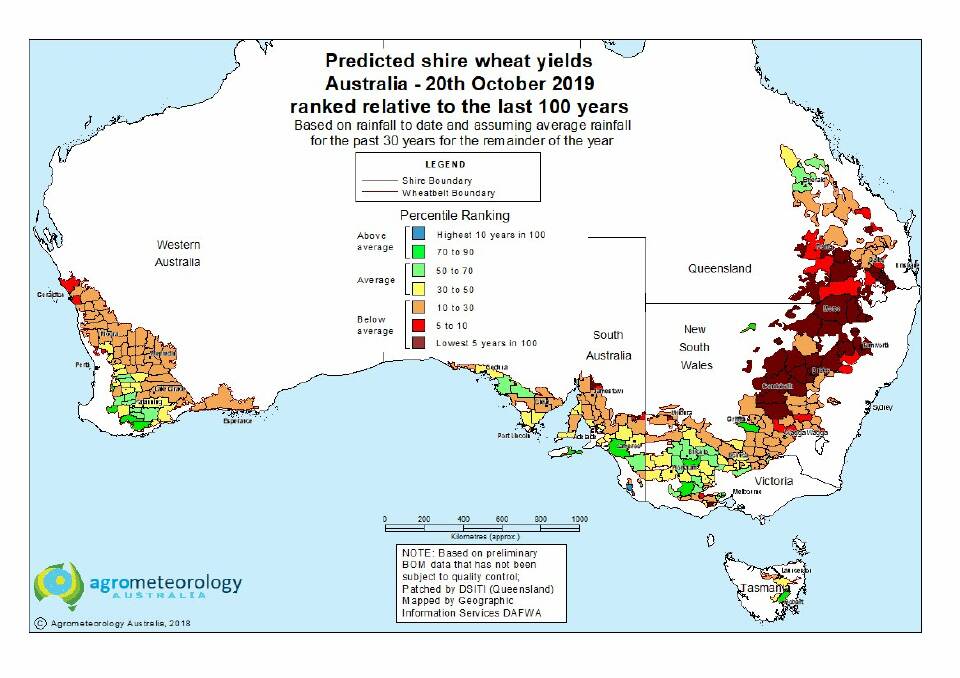
OCTOBER mapping from agricultural meteorologist David Stephens makes for fascinating viewing.
Subscribe now for unlimited access to all our agricultural news
across the nation
or signup to continue reading
The angry flecks of red, indicating a well below average season in the majority of local government areas in northern NSW, southern Queensland and northern WA give a visual representation of the extent of the drought.
However, from an industry point of view it is the work Dr Stephens did in May, with his company Agrometeorology Australia that could have a big impact.
Dr Stephens said the current models he has ran match in closely with those he did in May.
"We received some fairly useful rain over the start of the planting season and most other forecasters were much more bullish about their yield predictions, but my models came up with results not too dissimilar from what we are seeing now," he said.
"When I came out with the forecast people were surprised at just how strongly negative it was, but there are certain long lead things you can look at and it certainly has come up fairly close to the mark."
Dr Stephens said the expectation of low yields was not solely based on the weather forecast.
"You look at the soil moisture levels at the start of the cropping season and they were at historic lows for many shires and that obviously means you need rain throughout the season."
Getting an accurate forecast from autumn onwards has long been considered the holy grail of the Australian cropping sector.
Official weather models often have good accuracy from winter onwards, especially when there is a strong climate driver, such as an El Nino / La Nina phase or a strongly positive or negative Indian Ocean Dipole, but in autumn, when farmers are making planting decisions, forecasting skill is still low.
Dr Stephens' system involves the careful monitoring of climate factors and the use of analogue (similar) years from the past.
"You can't just look at the classic indicators, such as ENSO or the IOD because they can take a while to couple up."
He said in the case of 2019 he was able to see signs of a drier than average winter cropping period as far back as September last year.
"It's enabled my clients to be able to take a conservative approach and they have reaped the benefits as a result, you've seen them looking at doing things like cutting back on inputs and swinging into lower risk, earlier finishing crops such as barley where possible, both of which are looking like solid management options.
"The models I used also indicated the higher than average frost risk, which has certainly impacted a lot of growers this season."


